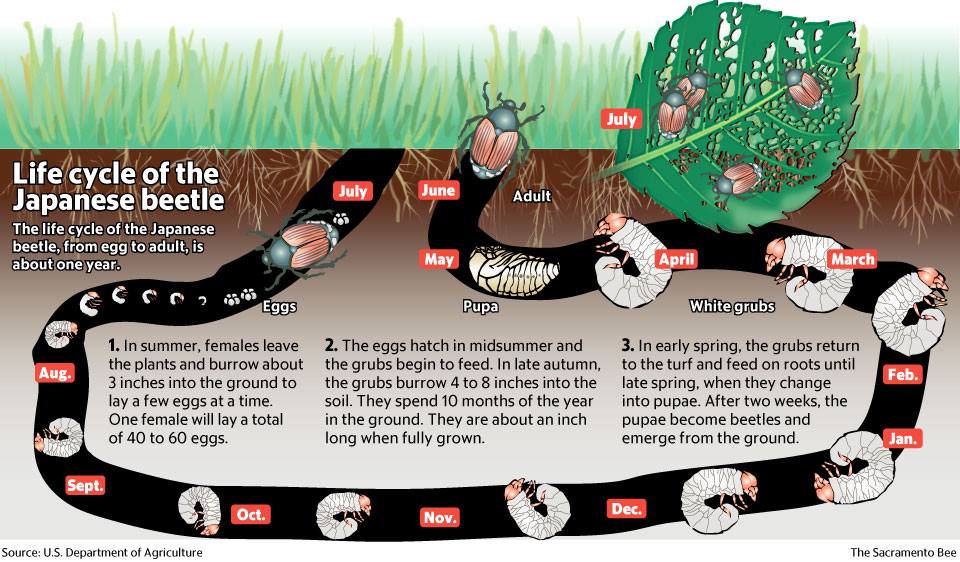Japanese Beetles
July 19, 2017 - Scott's Exterior Maintenance

Due to the summer work load, I'm a few weeks late on this post, but they are still active and we are still seeing the damage they caused, so it's still relevant information.
Any gardener is familiar with this nasty beetle and the destruction it causes. This time of year we are seeing the adult beetles devouring the leaves of plants and trees. The height of feeding in the area was about 2-3 weeks ago and they have tapered off now.
According to the life cycle, the adults feed in July and then lay eggs in the soil, which hatch into the white grubs that chew up our lawns in the fall and spring. The grubs overwinter in the soil and then emerge as beetles next June/July to repeat the process.
They have a preference for certain plants and will nearly defoliate the entire plant, which causes extra stress because it has to then flush out new growth and start over.
- Linden trees are noticeable this time of year because they often are one of the plants the beetles flock to. All trees around them are green while the Linden is brown. On closer inspection, the leaves are lace like and nearly completely eaten.
- They also often like roses, grapes, plums, among others.
Japanese Beetles Control:
Control is a mixed bag. Japanese beetles are not exactly difficult to control, but ultimately, it's an ongoing problem. Let me explain. Japanese beetles can be controlled in either the grub stage or the beetle stage and we have a few options for each. Treating individual lawns works well to prevent grub damage on that lawn as long as it's done annually. However, due to the mobility of the beetles, during the adult stage, even if you've killed every grub in your lawn, if your neighbor hasn't, the beetles will just fly over and devour your Linden tree, for example. The adult beetles can be sprayed, but within hours, more will fly in from the surrounding area to start devouring your Linden tree again.
Ideal control measures would include widespread regional treatment during the grub stage to reduce populations across the board. This is unlikely to happen unless they become a public health issue or the populations become so heavy they are literally destroying everything in sight.


